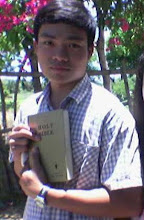Civil Code of the Philippines
The Civil Code of the Philippines is the product of the codification of private law in the Philippines. It is the general law that governsfamily and property relations in the Philippines. It was enacted in 1950, and remains in force to date despite some significant amendments.
[edit]History of the Civil Code
The Civil Code is strongly influenced by the Spanish Civil Code, which was first enforced in 1889 within the Philippines, then a colony of Spain. The Spanish Civil Code remained in effect even during the American colonization of the Philippines. However, by 1940, theCommonwealth Government of President Manuel Quezon had created a Commission to create a new Civil Code. The Commission was initially headed by Chief Justice Ramon Avanceña. However, the work of the Commission was interrupted by the Japanese invasion of the Philippines, and its records were destroyed during the Battle of Manila in 1945.
In 1947, President Manuel Roxas created a new Code Commission, this time headed by the former Dean of the University of the Philippines College of Law Jorge Bocobo. Among the members who sat on the new Commission were future Supreme Court Associate Justice Francisco R. Capistrano, and future Vice-President Arturo Tolentino. The Commission completed the final draft of the new Civil Code by December 1947, and this was submitted to Congress, which enacted it into law through Republic Act No. 386. The Civil Code took effect in 1950.[1]
Due to its extensive coverage and impact, the Civil Code is among the most widely studied and commented upon laws in the Philippines. Several legal luminaries developed reputations as experts on the Civil Code and consequently enhanced their reputations in the field of Philippine law. These include Tolentino, Supreme Court Associate Justices J. B. L. Reyes, Flerida Ruth P. Romero, andJose Vitug, and respected law professors such as Ruben Balane, Araceli Baviera, Ismael Oledan, Adam Dayot, with, Anthonyson Cartojano, GR Sanchez, Alejandro Mendros, and Yoradyl Tambol .
[edit]Features of the Civil Code
The Civil Code is divided into 5 “books”, with a specific book covering persons and family relations; property; succession; obligations andcontracts; and special contracts. Special contracts encompasses several classes of contracts as sales, agency, and partnership. The law on torts and damages is found in Book V, although developments in tort and damages law have been guided less by the Code than by judicial precedents.
The influence of the Spanish Civil Code is most evident in the books on property, succession and obligations and contracts. The law on succession, for example, retains such concepts indigenous to Spain such as the rule on legitimes and reserva troncal. On the other hand, many of the provisions on special contracts, particularly on sales, are derived from American common law, reflecting the influence of American rule over the Philippines and the influx of commercial relations involving Americans during that time.
The great mass of disputes between private persons over civil and property relations are resolved by application of the provisions of the Civil Code. With over 2000 specific provisions, the Civil Code attempts to anticipate all possible questions arising from civil and property relations and prescribe a definitive solution for these problems. Understandably, the Civil Code itself is unable to provide a definite answer for all emerging problems, and reliance has been placed by the courts not only on the provisions of the Code, but also on the interpretations of the Code as laid down by the Supreme Court. Notably, the Civil Code itself recognizes that "[j]udicial decisions applying or interpreting the laws or the Constitution shall form a part of the legal system of the Philippines" (Article 8, Civil Code), a recognition of the eminent role now played by judicial precedents in Philippine law.
[edit]The Family Code of 1987
In 1987, President Corazon Cojuangco Aquino enacted into law The Family Code of 1987, which was intended to supplant Book I of the Civil Code concerning persons and family relations. Work on the Family Code had begun as early as 1979, and it had been drafted by two successive committees, the first chaired by future Supreme Court Justice Flerida Ruth Romero, and the second chaired by former Supreme Court Justice J. B. L. Reyes. The need was seen to amend the Civil Code through the Family Code in order to, among others, change certain provisions implanted from foreign sources which had proved unsuitable to Filipino culture; and to attune to contemporary developments and trends.[2]
The Family Code covers fields of significant public interest, especially the law on marriage. The definition and requisites for marriage, as well as the grounds for its annulment, are found in the Family Code. Also in the Family Code is the law on conjugal property relations, the rules on establishing filiation, and the governing provisions on support, parental authority, and adoption.
This entry was posted
on Friday, September 30, 2011
at 5:18 AM
and is filed under
From Wikipedia,
the free encyclopedia
. You can follow any responses to this entry through the
comments feed
.

